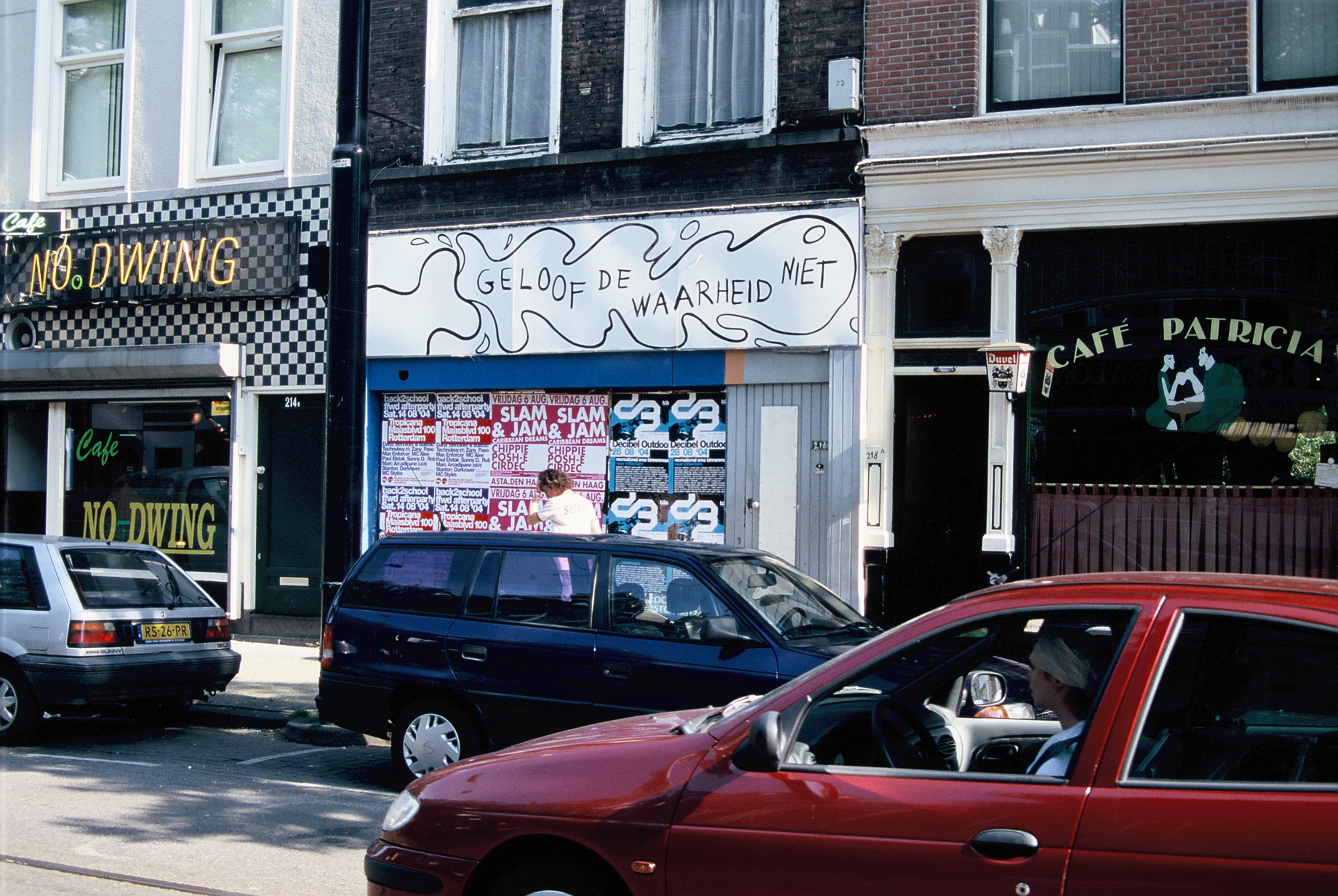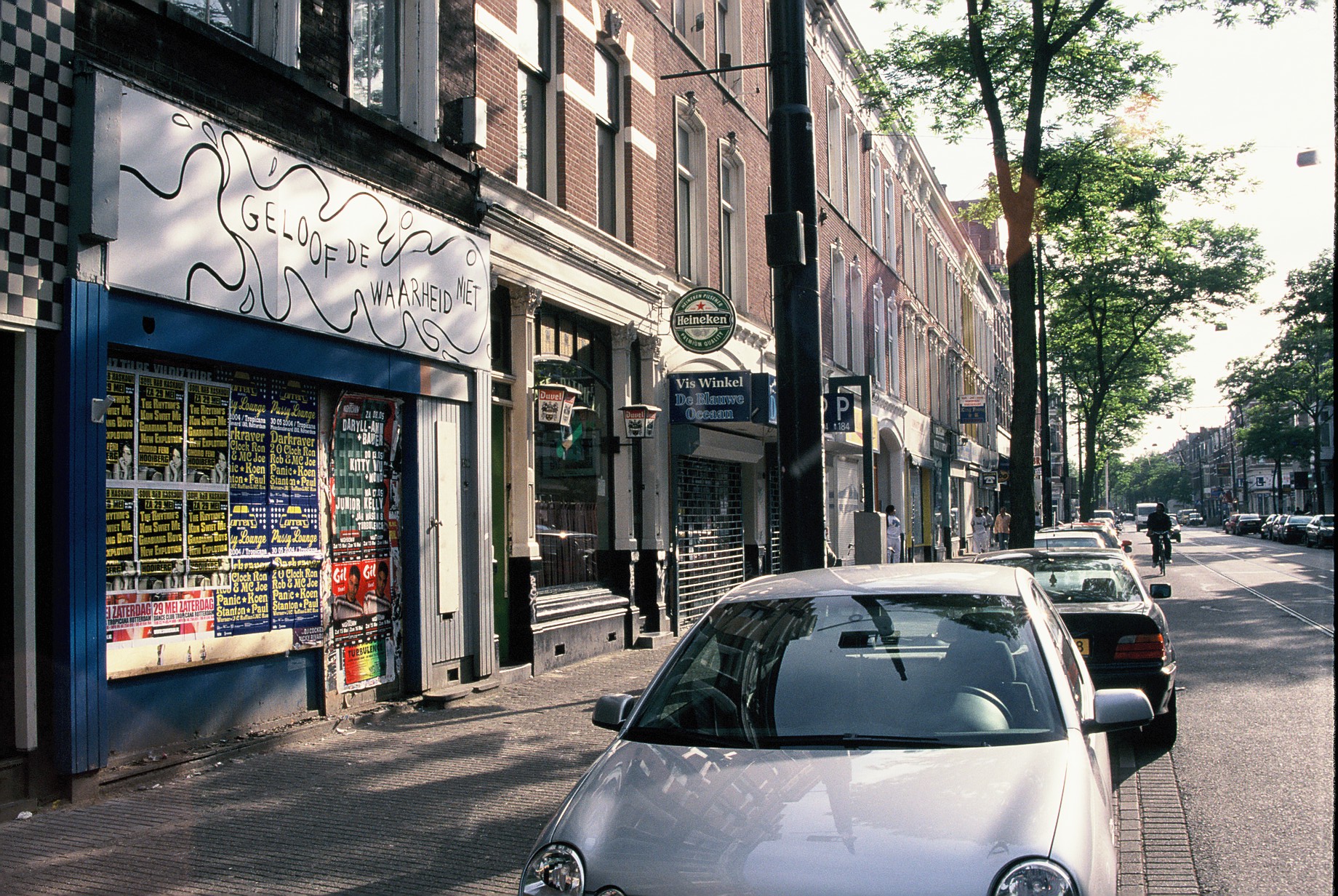Geloof de waarheid niet, (Don’t believe the truth)
The video is a recording from a street action on the Queen’s day in Rotterdam. With the repressive city policy of Rotterdam in the last years, street-life and street festivities have become increasingly controlled and organizing anything in the public space requires more and more permissions (which if granted, consequently need to be paid for). Queens day, a Dutch national holiday celebrating the birthday of the former Queen Juliana, has not gone unnoticed of this. Using the chaos the festivity still offers, the artists together with friends, dressed in colorful carnivalesque clown like dotted T-shirts, hang up a self made text billboard, on the facade of a closed down shop, with the words Geloof de waarheid niet (Don’t believe the truth). Geloof de waarheid niet is an intervention in public space made without official permission, but with a general (spontaneous) agreement of the local community. The video is at the same time a document of the intervention and a portrait of the Nieuwe Binnenweg (where the artists live), a street with a very mixed identity; form Europeans, Caribbeans, Africans, South Americans and Middle East to Asians. We see different groups of immigrants come out on the street to party and do business. The mixture of music, clothes and food culture contributes to the visualization of the hybrid identities in the urban atmosphere of this street.
The video, recorded with two cameras, shows the event in two parallel images. One showing the street from within the event, the other one from across the street, out of the window of the artists’ living room. The sound of the video switches from the sound of the street, its music, noise and conversations in various languages, to the music and conversations coming from the artists living room, also in different languages.
The billboard stayed as an anonymous sign on the facade for a half a year, leading its own life as a part of the city texture. It got removed after partly falling off, due to wind and rain. In the half a year its presence was picked up and speculated about in a couple of articles in the city’s newspaper and it appeared as a cover of a book on the city of Rotterdam – the work had become part of the city’s identity and texture and was being appropriated by others.








